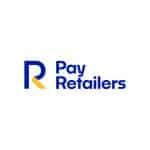ClearSale is an eCommerce fraud prevention solution with nearly two decades of experience, and more than 1,000 employees servicing 3,000+ brands (including enterprise retailers like Chanel, Walmart, Sony, and Rayban) around the world.
We sat down with Rafael Lourenco, ClearSales Executive Vice President, for an in-depth interview. He passed on some incredible advice and insight on a huge range of topics including 3D Secure 2.0, payment providers offering fraud prevention solutions, and how to foster a culture of innovation and creativity.
1. Your website states ClearSale is a “complete outsourced solution without being a black box”. Where should merchants be striking the balance in fraud prevention between using in-house knowledge of their customers and products, and outsourced expertise of advanced methodologies and techniques?
Every business is going to have a different “balance” of in-house and outsourced when it comes to fraud prevention. A merchant needs to take an honest look at their current fraud prevention strategies to see where they may be falling short. As with every other facet of a business, it’s important to capitalize on what your strengths are and then outsource in places where help will make things run more smoothly.
ClearSale’s mission is to give e-commerce businesses the freedom to focus on what they do best, unburdening them from the stress, time and risks that fraud can cause. This is why our solution is inherently flexible to each merchant’s needs, and it’s why we work closely as a partner to combine our fraud prevention expertise with our clients’ business and industry knowledge.
Here are some examples of the kind of expertise that merchants bring to us, and how we can turn that knowledge into a fraud-fighting tool that boosts approval rates while lowering chargebacks:
| MERCHANTS KNOW | WE CAN |
| Their most profitable products | Prioritize them throughout the analysis process |
| Their customers’ profile | Customize our procedures to assist them on the best way |
| Their VIP customers | Have a separate procedure for them |
| Their target markets | Offer fraud analysts working 24/7 in different languages |
2. When your AI flags an order for fraud, it gets sent for further manual review. Why is this necessary, and what kinds of things can a human spot that the algorithm can’t? What should merchants look out for when conducting their own manual reviews?
When a solution that relies solely on AI flags an order for fraud, it is either automatically declined or it is sent the merchant to figure out if it is fraudulent. The problem with the former is that 60% of every declined order by AI is a legitimate order, so for most of these auto-declines, you’ll be losing an order and very likely losing a customer for life (most customers won’t return after having their order declined). The problem with the latter is that merchants are left with an important decision that they don’t have the experience to make on their own.
Here’s an analogy that explains the danger of AI without the use of human review: A driverless car that sees its first stop sign in the real world will have already seen millions of stop signs during its programming in which a “mental” representation of what a stop sign is was built. Under various light conditions, in good weather and bad, with and without bullet holes, etc. the stop signs that it is exposed to contain a bewildering variety of information.
Under most normal conditions, the driverless car will recognize a stop sign for what it is and take the appropriate action. But, not all conditions are normal. Some recent demonstrations have shown that a few stickers on a stop sign placed where a human wouldn’t even notice a difference, fools the algorithm into thinking that the stop sign is a 45-mph sign. Graffiti-like stickers that read “love” and “hate” also confuse the algorithm into reading the stop sign as a speed limit sign the majority of the time, among other situations.
While AI is a constantly improving technology (as “learning” is part of its core function), it’s not at a place where it can understand the nuances of human behavior. For example, the common activities that normally would flag fraud:
- Buying a large ticket item
- Making a purchase quickly
- Buying at odd hours of the night
- shipping to a different address, or multiple addresses
Can be explained with legitimate reasons that AI may not understand:
- Just received bonus at work or got a huge promotion
- Impulse shopping or previous browsing that lead to quick purchase
- Night owl or keeping vacation hours
- Sending gifts to friends or family
However, a human can look at the “big picture” – including previous shopping habits, life changes that could have affected the new spending, networks of known fraudulent areas, addresses, and names. And if all else fails to rectify the order’s legitimacy, then contacting the customer to ensure that the order is not fraudulent.
3. You offer a business analytics solution, which the majority of other solutions do not. Why do you think this kind of information is valuable? What kinds of metrics are you measuring, how are you analyzing them, and in what way do your conclusions influence the fraud decisions you make? What advice would you give a merchant looking to get started with their own analytics program?
As a data-rich company, we think that no amount of information is too much. This is why we provide our clients with metrics that they can use to evaluate our services as well as their fraud KPIs overall. Fraud is not a stagnant ecosystem, it is constantly evolving, so knowing what is working and what isn’t regularly is vital to keeping your fraud prevention efforts up to date.
Some of the internal metrics we use to ensure that our clients are receiving the best solution possible is approval rates, false-positive rates, time for decision, fraud score, analyst performance segmented based on type of business, industry, country, etc. Analyzing these metrics allows us to provide data to our clients for their approval and fraud rates, the decision time and chargeback fluctuations, and our analysis and recommendations for adjustment.
I would advise that any company looking for analytics on fraud should make sure to ask as many questions as you need to ensure you are getting the metrics you need and want to better understand your fraud strategy and how it is working for your business.
4. ClearSale places a lot of emphasis on avoiding false positive declines. What would you say to merchants who still don’t see them as the “real problem” (as opposed to chargebacks)?
We understand that a lot of merchants don’t see false positives to be as “bad” as chargebacks. Chargebacks cost you fees, damage your risk standing with your merchant banks, and appear as a cost on your income statement.
What merchants may not know, however, is that false declines cost merchants over $118 billion a year in lost transactions. As high as this number is, it doesn’t include the additional lost revenue that results from irritated customers taking their business elsewhere. In addition, if a customer is angry about their transaction being falsely declined, they won’t be shy about it, and can quickly spread their displeasure across their social media channels and personal networks. The result? A wealth of potential customers who decide to cross that business off their list.
We see false declines as a growing problem in our industry as the influx of fraud protection software that relies on overzealous auto-decline rules is growing. It can cause serious long-term damage to a merchant, and for some smaller e-commerce retailers, this could spell disaster for them.
This doesn’t mean we’ve forgotten about chargebacks. We offer our clients a chargeback guarantee that provides 100% reimbursement of all fraud-related chargebacks.
5. If you could give one piece of advice to merchants on how to lower their false positive decline rate as quickly as possible, what would it be?
When it comes to false positives, they key is not to adopt the “out of sight, out of mind” approach. It’s vital to take the time to look at declines, figure out why those declines happened, and determine which ones were done in error and contact the customer right away to help resolve the issue. This can be a lot of work, however.
To mitigate this work, we recommend finding a hybrid solution that can do an initial screening with AI/machine learning for risky/flagged orders, Then, any flagged transactions are handed off to an expert team of manual reviewers to analyze the flags, figure out what’s happening, and if needed, contact the cardholder to get clarification. This way, transactions are only declined if they’re genuinely fraudulent, not merely unusual.
That’s how we do things at ClearSale. In addition, our fraud experts are not assessed solely on chargeback rates. High standards and multiple KPIs result in a 360-degree view of every transaction.
By using the most effective tools available and looking at fraud from multiple angles, merchants can have the best of both worlds: reduced chargebacks and a lowered risk of false declines.
6. The trend is for payment processors like PayPal to offer native eCommerce fraud solutions. What would you tell merchants thinking about using solely these services to protect themselves against fraudsters?
While we are very happy to see that more and more payment solutions are implementing a layer of fraud protection, we generally find that using only these programs are too simple – they lack customization capabilities, use generic algorithms, have limited reporting and a lot of time, don’t offer support or flexibility to scale manual review.
These native services are great for companies that are just starting out or who have a very low fraud risk, but for companies that are looking for growth (especially cross-border), who are in a medium or high-risk industry, or have had issues with fraud in the past, I can’t recommend enough to look at adding a third-party fraud prevention solution to work on top of the one provided by their processor.
7. What do you think the impact of 3D Secure 2.0 will be? Should merchants be looking to adopt it as part of their fraud prevention strategy?
I do think that 3D Secure 2.0 will be, and is already had, an impact on most e-commerce merchants. We recently did a report on this with Aite Group.
To start, customer experience is one of the top concerns for merchants to adopt fraud prevention services:

81% of companies are likely or have already invested in updating 3D Secure 2.0:

While those are high numbers, we also found that only half of them plan to use 3DS 2.0 on 100% of their transactions. The main concern is the impact on conversion rate, which we also saw was a concern with the first version of 3D Secure:

So, while I do see that merchants are on board with 3DS 2.0, I think that there are still some reservations about how complicated it makes the checkout experience.
8. A culture of innovation and creativity is mentioned as a key part of your fraud prevention philosophy. Why is that the case, and how can merchants go about building a similar culture at their organization?
Our founders, Pedro Chiamulera and Bernardo Lustosa, have always fostered this culture of innovation and creativity. They believe that empowering out of the box ideas, taking smart risks, and thinking big picture produces the kind of creative results that support sustainable growth beyond the short-term effects.
Some ways that merchants can go about creating a culture that prioritizes continuous learning are:
- Implement an environment – from the top down – that is built on trust and support, allowing teams to be fearless in the face of challenges.
- Hire top talent with a confident and pioneering attitude and the motivation to deliver impactful results. Train them for tactical agility and embolden them with trust and support to enable them to adapt to changes in the business’s landscape.
- Sponsor and support smart risk-taking, including making the “right kind of mistakes” to maximize the chances of disruptive ideas coming to light.
These aspects have been key to our development into a leading anti-fraud solution centered on a novel concept. They provided us the courage to expand the company’s perspective from the safe zone of a scalable tech company into a full-service fraud company. That, in combination with our collective focus on excellent results, proved to be our winning strategies, even when faced with economic and structural hardship.

Leading smart people to solve complex problems in dynamic environments is Rafael’s signature skill. As ClearSale’s Executive Vice President, Rafael combines the company’s innovation-driven culture and emphasis on communication with a deep understanding of the statistical tools that underpin excellent fraud protection.
Rafael represents one of the world’s most experienced and largest firms of its kind, with more than a decade of e-commerce fraud detection and prevention services in major international markets. From his base in Miami, he oversees ClearSale’s US anti-fraud operation by leading its commercial, statistical intelligence and IT teams and providing technical and executive management for all the operation’s employees, both in the US and in Brazil.





























